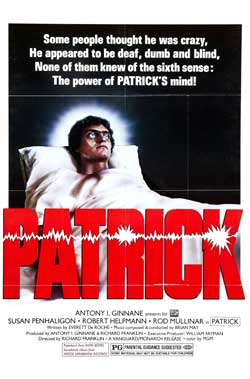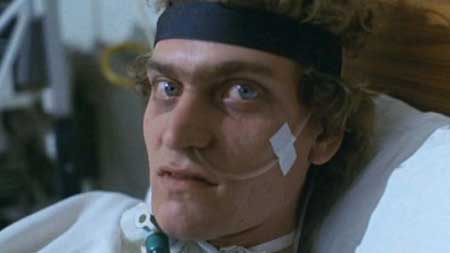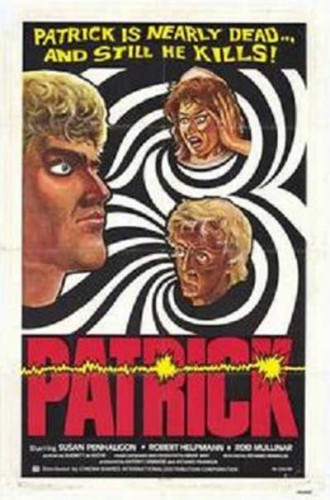SYNOPSIS:
A comatose hospital patient harasses and kills though his powers of telekinesis to claim his private nurse as his own.
REVIEW:
“One thing’s for certain: Patrick never does anything on purpose.”
The 1978 thriller, Patrick, was a milestone in Richard Franklin’s cinematic career. Its success allowed for such cult classics as Road Games and Psycho 2, though Franklin never had a celebrated career like Peter Weir or such contemporaries. This film is highly-lauded in Australian horror cinema (being an early example of Ozploitation) with music composed by Brian May who later composed scores for Mad Max and Road Warrior (although, for the Italian release of Patrick, the score was replaced by prog rock band, Goblin) and a screenplay by Everett De Roche.
We learn of Patrick’s (Robert Thompson) backstory rather quickly: he has murdered his mother and her lover by electrocuting them in a bathtub. Inexplicably, he sinks into a coma afterwards and is cared for in a Catholic hospital by a Dr. Roget (Robert Helpmann), more bent on experimentation than therapy having discovered that Patrick has psychokinetic abilities. Roget is obsessed with the segregation of the physical from one’s “essence,” often delivering such dialogue as, “Determining the exact moment of death is one of the most controversial issues in modern medicine.” That science and religion subtly cross swords throughout the film provides a fitting, if not slightly obvious commentary; not to mention a few nature-versus-nurture asides: “A born devil on whose nature nurture can never stick.”
Our protagonist is Kathy (Susan Penhaligon), a freshly-hired nurse, overseen by the dictatorial Matron Cassidy who is wary of Patrick’s telekinetic shenanigans. Kathy’s first assignment is to watch over Patrick in Room 15. He suffers from brain damage; eyes staring straight ahead but seeing nothing. “He’s what you’d call an acute,” one of the nurses informs her. In fact, he’s been unconscious for three years. “You will be expected to keep the eyes bathed and lubricated,” she’s told.
She soon learns that Patrick has a propensity to spit, as well as muscle spasms and instinctual movements – all normal, hardwired mechanisms. Kathy has a husband, Ed, she wishes to divorce. He’s a right bugger who thinks nothing of breaking into her apartment or sitting outside her flat at all hours of the night. However, as the film goes on, one begins to realise that he is only an ignorant buffoon who really does genuinely care about her.
At first, Patrick (who never speaks or blinks onscreen) begins to communicate by electric typewriter and various other means such as syllabic spitting but, inexplicably, he begins to slowly regain his sense of touch as well (and if Patrick were given more time to “wait” it makes one wonder whether he would have regained his faculties altogether). The ending of the film contains its greatest irony where Patrick’s most advanced motion is not derived from himself (it’s also darkly comedic).
When Kathy’s invited to a party at a neurosurgeon’s (Brian) house, she reluctantly accepts. Brian is nearly drowned in his pool by an unseen force and soon he and Kathy begin to work together to figure out what’s going on: the whole premise being, Patrick’s had three years, deprived of his five senses, to develop this psychokinetic “seventh.” For some reason he has fixated on Kathy and uses his telekinetic ability to “protect” her. “Better off without those who hurt you,” he communicates to her. You see, there is a poignancy to much of what Patrick psychically channels, however, it is often the shoddy budget and sloppy editing which undermine the effectiveness of the screenplay.
With the exception of Penhaligon and a few select others, the acting’s a bit rubbish and there are some awkward editing choices, but overall the film is well-directed with an interesting premise. Made on a shoestring budget, the right notes are being hit throughout, it is often the presentation that is wanting. It is Franklin’s direction, however, which almost makes it work; forging the offbeat, oddly-moving nature of the film into one of the few redeeming strengths.
Rating: C+
 Horror News | HNN Official Site | Horror Movies,Trailers, Reviews
Horror News | HNN Official Site | Horror Movies,Trailers, Reviews











